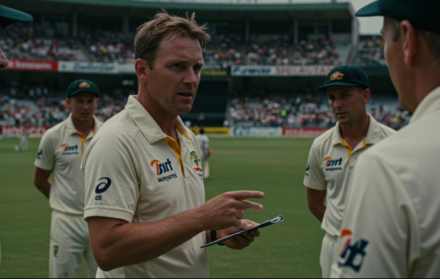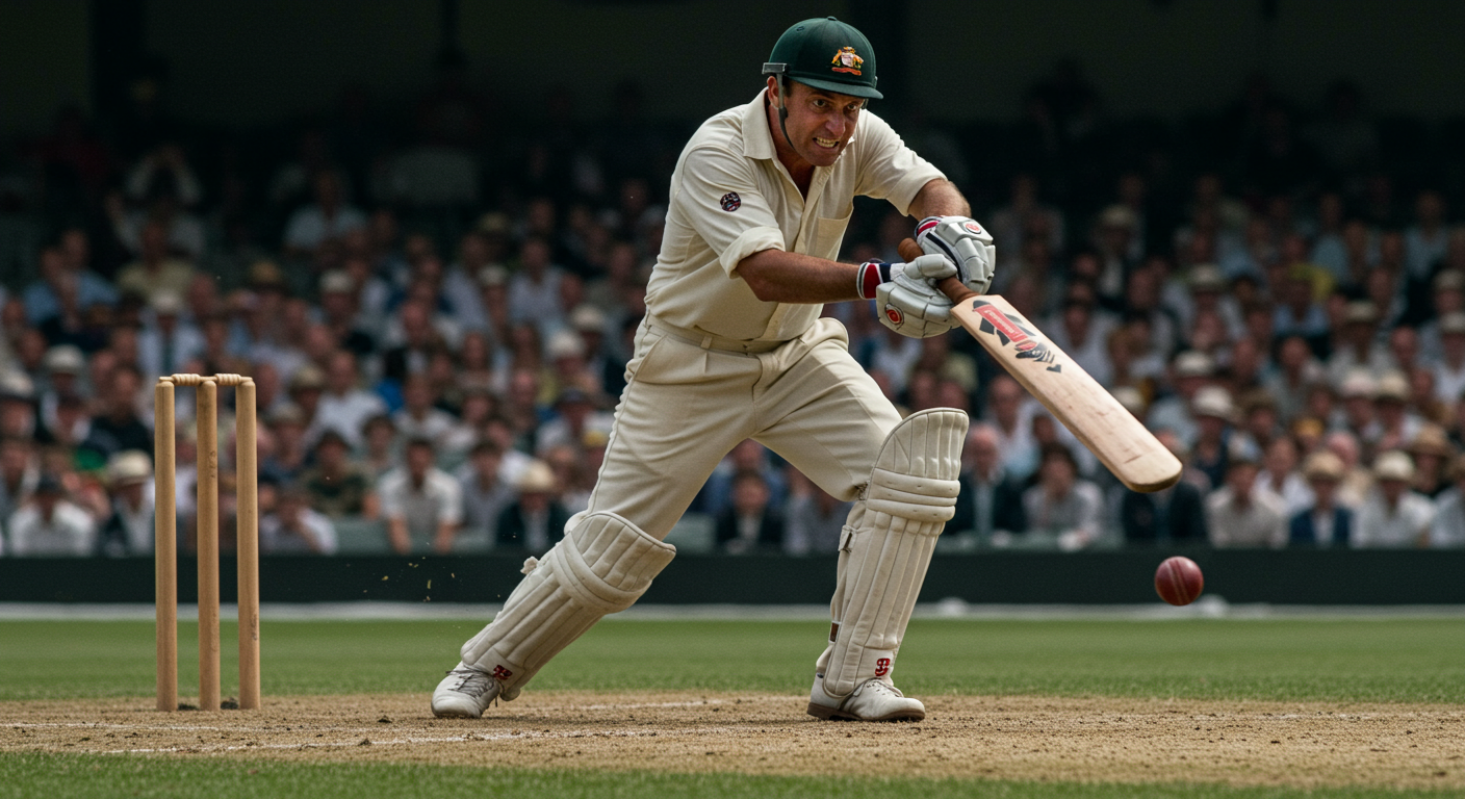
Don Bradman: The 99.94 Phenomenon That Cricket Will Never See Again
In a sport defined by numbers—runs, averages, wickets—there is one figure that has transcended statistics and entered the realm of legend: 99.94. That was the final batting average of Sir Donald Bradman, the greatest cricketer the world has ever known. It’s not just a number—it’s a monument. An enduring symbol of sporting perfection that, more than 70 years after his retirement, still has no rival.
Don Bradman played in a vastly different era. No helmets, uncovered pitches, long sea voyages between tours, and limited support staff. Yet he dominated with such staggering consistency that the next best Test average among elite players—Steve Smith’s—hovers around the mid-50s. The gulf is not just wide. It’s incomprehensible.
In a career of just 52 Tests, Bradman amassed 6,996 runs and 29 centuries. He needed just four runs in his final innings to finish with a perfect 100 average. He was bowled for a duck. Even in its imperfection, that story became myth.
This article explores the magnitude of Bradman’s achievement—not just in numbers, but in influence. It’s a journey through his unmatched feats, his context, his legacy, and why cricket, no matter how far it evolves, will never again witness a phenomenon like Don Bradman.
The Numbers Behind the Miracle
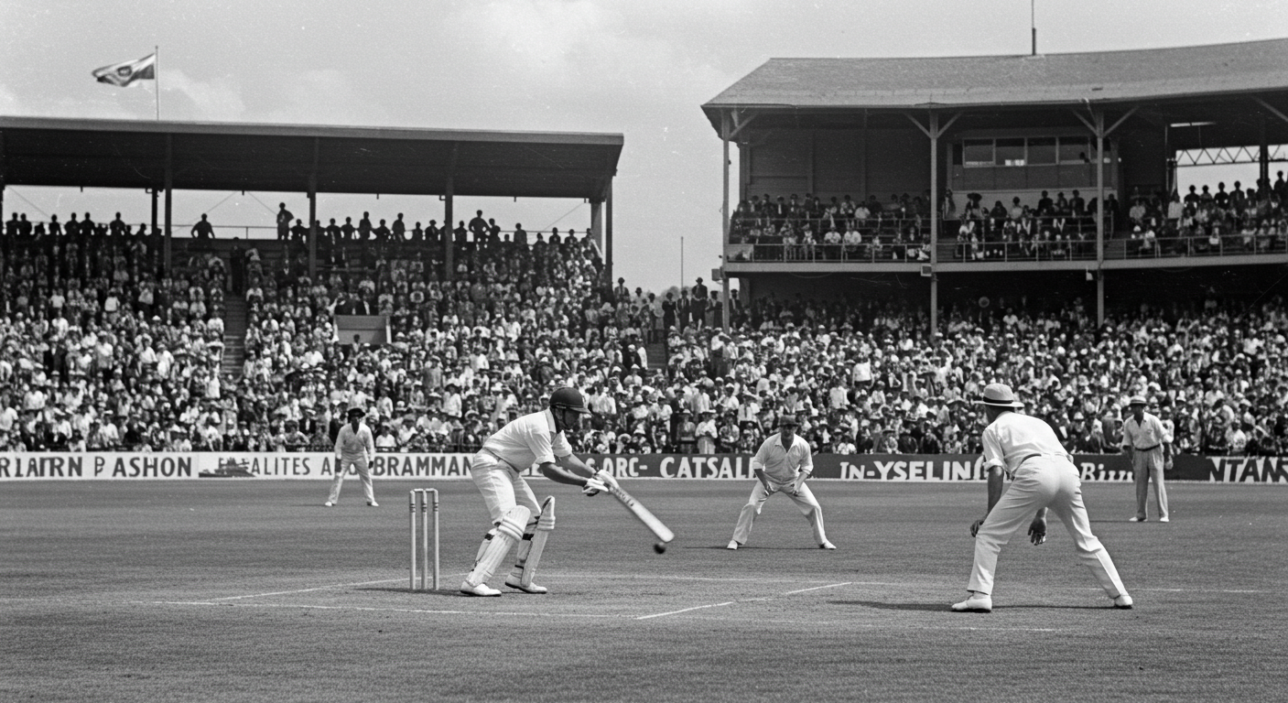
To grasp how extraordinary Don Bradman’s career was, one must start with the numbers—not just because they’re impressive, but because they are impossible.
In Test cricket, Bradman averaged 99.94 across 80 innings. That alone is staggering, but it becomes even more awe-inspiring when viewed against his peers. In his own era, most top-order batsmen averaged between 30 and 40. Even among modern greats, few break into the 60s. Bradman wasn’t just better than his competition—he was operating on a different mathematical plane.
He scored 29 Test centuries in just 52 matches. To put that in context, Sachin Tendulkar, who holds the record for most Test tons, made 51 centuries in 200 matches. Bradman scored a hundred every 1.8 Tests—a conversion rate no one else has come close to matching. His double and triple hundreds came at a pace that broke opposition spirits. He scored 974 runs in a single series against England in 1930. That record still stands.
And then there’s the famous 99.94. A duck in his final innings denied him a triple-digit career average. The cruel poetry of that moment only added to the mystique.
What makes it even more extraordinary is the context: no protective equipment, uncovered wickets, hostile bowling attacks, and wartime interruptions. Bradman didn’t just survive—he dominated under conditions modern players wouldn’t dream of accepting.
His numbers weren’t simply good. They were impossible, magical, and eternal. And no matter how the game evolves, they will likely never be touched again.
Technique, Tempo, and the Mind of a Genius
To understand how Don Bradman achieved statistical immortality, one must move beyond the numbers and look at how he did it. Bradman’s technique was unorthodox by classical standards. He didn’t possess the textbook poise of Wally Hammond or the smooth strokeplay of Ranjitsinhji. In fact, many contemporaries were initially sceptical of his style—compact stance, high backlift, and rapid footwork. But what set Bradman apart wasn’t aesthetics. It was efficiency.
His unique technique was forged in the backyard. As a child, Bradman famously practiced using a stump and a golf ball, striking the ball against a water tank. It was a solitary and relentless drill that honed his reflexes, coordination, and balance to superhuman levels. This improvisational foundation translated into a batting method that was fast, reactive, and precise. He judged length early, picked gaps instantly, and could dismantle attacks before they had time to settle.
Bradman’s stroke range wasn’t flamboyant, but it was devastatingly effective. He favoured the cut and the drive—both played late, with immaculate placement. But what truly overwhelmed opponents was his tempo. Once in, he didn’t score at a steady tick—he surged. Bowlers who believed they had him under control often found 30 had become 70 in the blink of an eye.
Then there was his mental game. Bradman was calculating, self-contained, and utterly focused. He studied bowlers obsessively, analysing field placements and exploiting psychological weaknesses. He knew when to attack, when to defend, and most importantly, when to dominate. The moment he sensed weakness, he pounced.
He was also adaptable. Bradman’s innings weren’t all built on flat tracks or against weak attacks. He succeeded in England, South Africa, and Australia—facing swing, seam, and spin with equal assurance. On matting wickets, under clouds, on drying outfields—his method held firm.
Modern analytics now speak of strike rates, control percentages, and expected averages. Bradman didn’t have data. He had instinct. And with that, he built a legacy not of style points—but of sustained, scientific devastation. No one before or since has combined hand-eye coordination, tactical awareness, and scoring speed the way Don Bradman did.
The Man Who Carried a Nation
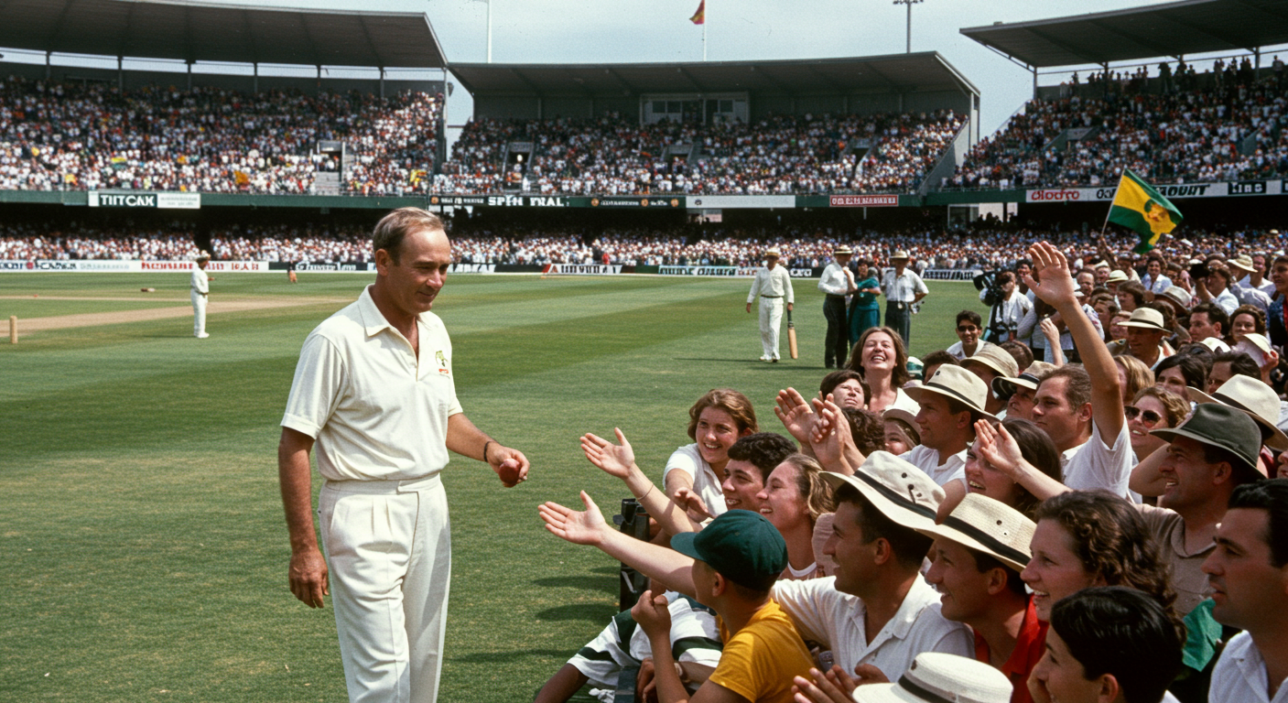
Don Bradman’s greatness was not just in how he batted, but when he batted. He rose to prominence in the late 1920s, and by the early 1930s, as the world plunged into economic despair, he had become the beating heart of Australian national pride.
The Great Depression hit Australia particularly hard. Banks collapsed, jobs disappeared, and morale across the country reached historic lows. In this bleak landscape, Bradman became more than a cricketer. He was hope. His centuries weren’t just sporting achievements—they were moments of collective relief, victories for the common man.
Every boundary felt like a blow against despair. Every milestone was front-page news. And when he toured England in 1930 and scored 974 runs in a single Ashes series, Australians didn’t just celebrate his skill—they saw him as proof that, even in hardship, their nation could stand tall.
But Bradman’s popularity wasn’t simple. He was a reserved man, often distant from teammates and wary of public adoration. His refusal to play to the crowd off the field sometimes made him seem aloof. Still, his discipline, stoicism, and relentless pursuit of excellence mirrored the very values Australians held dear. He became a cultural cornerstone, a sporting figure whose reputation transcended sport itself.
Bodyline: The Strategy Built to Stop Don Bradman
There are few greater compliments in sport than the opposition designing an entire strategy around you. That’s exactly what happened in 1932–33 when England, under captain Douglas Jardine, unleashed Bodyline—the most infamous tactic in cricket history—just to stop Don Bradman.
After his domination of England in 1930, Bradman had become unplayable using conventional methods. So England changed the rules of engagement. They deployed fast bowlers like Harold Larwood to bowl short, quick deliveries aimed directly at the batter’s body, with leg-side fielders waiting for deflections. The intention was to rattle Bradman—physically and psychologically.
It worked to some extent. Bradman still averaged over 50 in the series, but he never looked as comfortable. The spectacle shocked spectators and drew widespread criticism. The Australian public was furious. Cricket authorities on both sides teetered on the brink of diplomatic crisis.
But Bodyline also underscored Bradman’s importance. One man had redefined the stakes of international sport. He wasn’t just the best player on the field—he was the one dictating how others would play the game.
Bradman adapted, of course. He found new ways to score. But the fact that Bodyline existed at all is the clearest evidence of how singular his presence was. Cricket had never seen anything like him—and it never will again.
A Statistical Outlier in a Game Obsessed with Stats
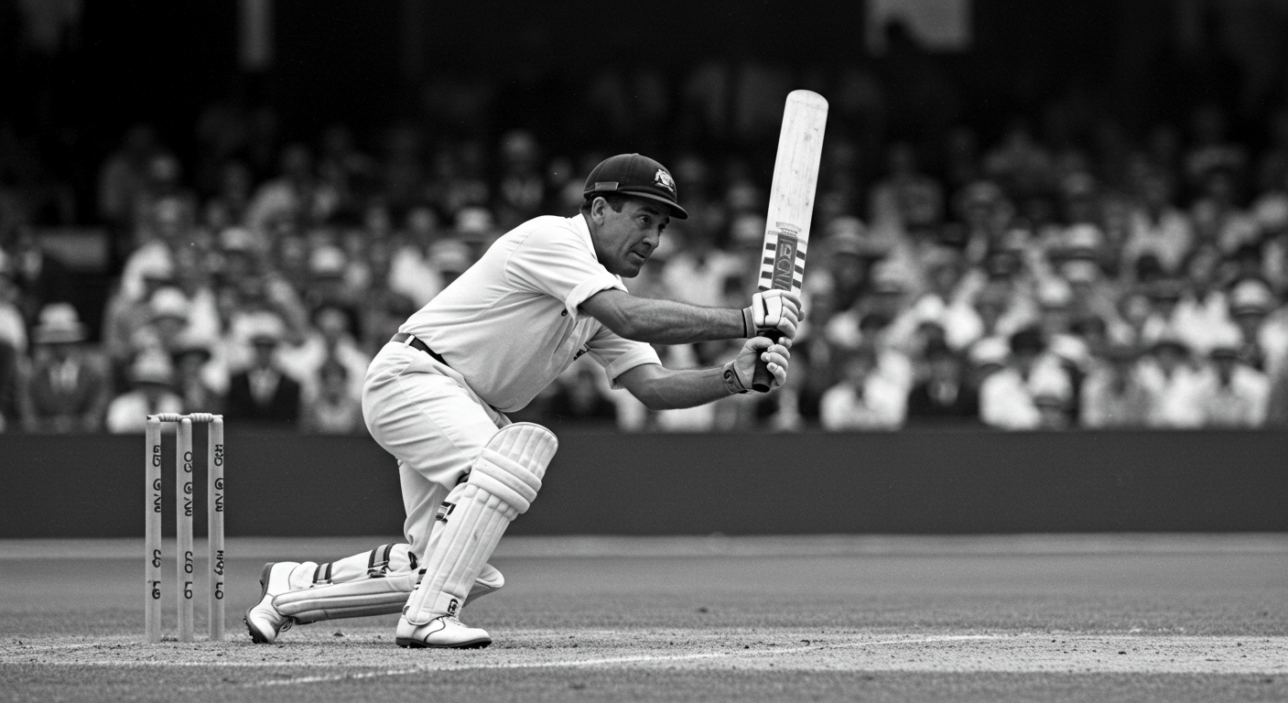
Cricket is a sport that lives and breathes numbers. Batting averages, strike rates, economy figures—they’re pored over in commentary boxes, spreadsheets, and pub debates alike. But in this numerically obsessive culture, Don Bradman stands as a singular, towering anomaly.
His final Test average—99.94—is not just the highest in history; it’s statistically absurd. To put it into context: modern greats like Jacques Kallis, Kumar Sangakkara, Steve Smith, and Virat Kohli average between 50 and 60. Even players widely considered the best of their generation are still 30–40 runs per innings behind Bradman.
Analysts have attempted to frame his record using z-scores and deviation curves. The conclusion? Bradman isn’t just the greatest cricketer statistically—he’s the most dominant athlete in any sport when measured against his peers. His advantage over the second-best is greater than that of Messi, Federer, or Michael Jordan.
And it wasn’t due to padding stats against weak opposition. Bradman dominated the best teams of his era, under the harshest conditions, across continents. From green seamers in England to dusty decks in Sydney, he averaged more, scored faster, and converted starts more ruthlessly than anyone before or since.
If he had scored just four more runs in his final innings, he would have retired with a perfect average of 100. That he fell for a duck is poetic—not for diminishing his legacy, but for giving it a human touch.
99.94 is not just a number. It’s a statistical monument to sustained excellence.
Why There’ll Never Be Another Don Bradman

Cricket has changed. The game is faster, the calendars fuller, the formats more fragmented. Test matches share space with T20 leagues and ODIs. Players now must adapt across formats, juggle workloads, and exist under relentless public scrutiny. In this new world, the idea of another Bradman is not just improbable—it’s impossible.
Bradman had singular focus. He played only Tests, at a time when each match was an event. There were no white-ball distractions, no media obligations, no branding portfolios. He was a craftsman, allowed to perfect his art in a less intrusive era.
Modern greats like Kohli or Root are magnificent, but they battle across formats, against analytics, fatigue, and the weight of commercial expectation. No one has the mental space—or statistical purity—to emulate Bradman’s consistency. The very structure of cricket in 2025 ensures that no one will ever dominate as totally, as consistently, or as effortlessly.
There’s also the psychological barrier. Players today grow up knowing 99.94 is unbreakable. It’s not a target to chase—it’s a relic of a bygone age, like Babe Ruth’s home run record or Secretariat’s Belmont win.
Bradman’s record has withstood generations, new technologies, and changing batting philosophies. Not because others haven’t tried—but because his level simply doesn’t exist anymore.
In every sport, there’s one figure whose legend never fades. In cricket, that figure is Don Bradman. And his average—etched in the minds of every fan, carved into history—isn’t just a number.
It’s a reminder of what true sporting genius looks like. And why we’ll never see its like again.
